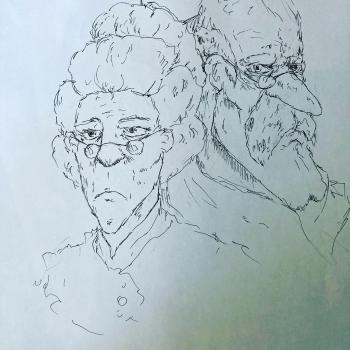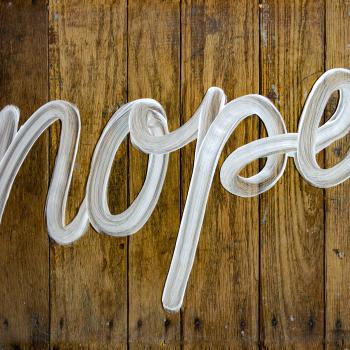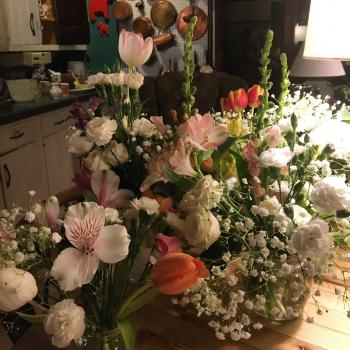Someone in my house appears to be hacking up a lung. Not sure what that is about—hopefully not the apocalypse—I should probably go find out. But before I do that, go check out this fantastic and long article. I found it as I was wandering around reading about very tiny purses yesterday. There are so many great passages, let me just pull a couple. It’s about “millennial pink” and the overall “millennial aesthetic.”
This:
Sometimes the hipster flirted with racism and misogyny, couched as irony or provocation — a certain performance of exclusivity (even just daring your audience not to get the joke or know the band) was central to the hipster aesthetic’s appeal. But the millennial aesthetic aims its appeal at everyone. Propagated by brands and advertisements, it is a fundamentally commercial aesthetic — and why alienate any potential customer? Millennial marketing showcases models of many races and body types, and the products on offer are obvious in their charms. Every sofa and soft-cup bra presents itself not as evidence of distinctive taste but as the most elegant, economical, and ethical solution to the problem of sofas or soft-cup bras. Simplicity of design encourages an impression that all errors and artifice have fallen away. The millennial aesthetic promises a kind of teleology of taste: as if we have only now, finally, thanks to innovation and refinement, arrived at the objectively correct way for things to look.
And this:
No account of the millennial aesthetic could fail to address pink: For the better part of a decade, millennial pink bedeviled anyone a color could bedevil. When Facebook rolled out a corporate rebrand last fall, the lead image in the press release showed the new logo — breezily spaced sans serif — in a muted shade somewhere on the ham-to-salmon spectrum. Samuel keeps wondering when people will get sick of the color, but they don’t; almost every client asks for pink. She thinks this is because it’s soothing. They want houses that remind them of vacations, suggest Mediterranean idylls.
“It kind of feels like a binky,” Deborah Needleman, the former editor of T, WSJ., and Domino, says of millennial interiors. (Boob-print pillows and bath mats are perhaps the most literal expression of a general tendency toward the comforts of babyhood.) Needleman sees not a trip to Greece but something more like childproofing. “It’s like it has no edge or sense of humor or sense of mystery,” she says. “There’s no weirdness. There’s nothing that clashes. It is very controlled.”
And this:
Instagrammable is a term that does not mean “beautiful” or even quite “photogenic”; it means something more like “readable.” The viewer could scroll past an image and still grasp its meaning, e.g., “I saw fireworks,” “I am on vacation,” or “I have friends.” On a basic level, the visual experience of a phone favors images and objects that are as legible as possible as quickly as possible: The widely acknowledged clichés of millennial branding — clean typefaces, white space — are less a matter of taste than a concession to this fact.
Before Samuel began working on interiors, her training was in graphic design, which has proved to be an advantage: “I think about it in all the different points of view — how it will look flat in a photo as well as how it moves as a space.” The summary of services she provides clients in her contract promises “Instagram-ready interiors.” The millennial aesthetic flows freely between physical space and flat image, between brands and the people who buy.
I feel like I read, sometime in the fading light of 2019, that millennial pink was absolutely over, and that “jewel tones” were definitely coming back in. ‘That’s so great!’ I thought to myself. My dining room and kitchen will be “in.” But I haven’t really seen any evidence of it. While I wait, I’m going to repaint my kitchen to match the deep luxurious red of my dining room. I have to because we painted the living room, finally, breaking with our commitment to what I like to call “Mexican Fiesta” but what I’m really hoping would be “Easter-European/Russian” (not collusion! I swear!) a very very pale blue. This is not because we are trying to avoid the intensity of our own emotions, but because of light. The light in the living room really gloams—I feel like that’s the word I want. At first, I was anxious that we had Done The Wrong Thing, but as the room has settled into itself, I have become very happy. Except the kitchen doesn’t feel right anymore. So I must soon break out the brushes again.
Of course, no one cleans my house, unless I’m screaming. So, it’s not like you would walk in here and feel any particular way except for stressed, probably. But maybe when all my kids leave, it will be exactly the way I want it—just kidding. Probably lonely sadness will replace outrage. Or something. Yesterday they told me they were all staying here “through college” whatever that means, so I don’t even know why I’m thinking about this.
The point about going back to whatever it was that made up your childhood is absolutely true, though, and why I don’t have any emotional attachment to anything like millennial pink or whatever it is that Xers feel nostalgia about (no one cares about the Xers, isn’t that a hundred memes somewhere?). The house I grew up in was mudbrick and thatch. The brick was covered with a thin layer of cement and then whitewashed. Diaphanous curtains dyed with turmeric and then faded back to white shrouded the windows (mostly). I mean, to me it was idyllic, but also very hot, not immune to life-threatening bugs and snakes, and did not have electricity or running water, which I thought was a feature, but most other people might class among the bugs.
I’m not trying to get that exact look here in Binghamton, but at least the spirit of it. Which is why my attic lair loo looks the way it does, and why no one is allowed to turn on an overhead light. Nostalgia, that’s what I’m saying.
The thing is, true beauty isn’t exactly safe. Which is why there is a certain kind of “churchy” aesthetic that I am always trying to achieve, especially in my Sunday School rooms, and in the clutter of objets that I jumble everywhere in my life. It is more ancient, dusty perhaps, meant to both comfort and disrupt in the same glance, like the gospel itself. I can’t get it quite right, no matter how hard I try, which I think is exactly the point.
Oh gosh, that poor kid probably just lost a lung! Have a great and healthy day!













